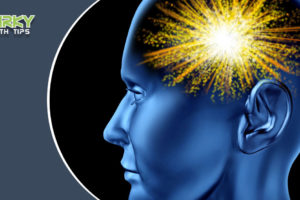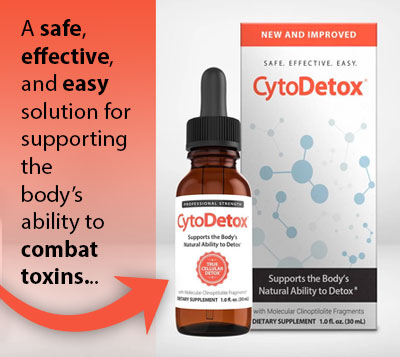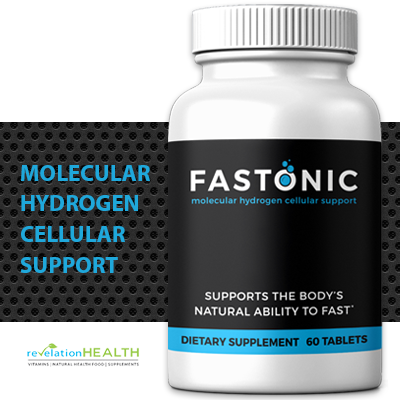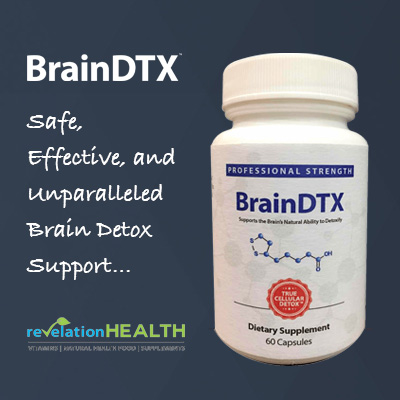Turmeric or Curcumin? Taking a Bite Of Turmeric & A Bite Out of Curcumin
Turmeric or Curcumin? As Science focuses extensive research on Curcumin—a mere fraction component of the herb, Turmeric—the ancient roots of this rhizome are revealed to be true in its efficacy as well as superiority over many medications.

Turmeric is a miraculous herb.
But, the isolated, fractioned, concentrated compound, Curcumin, struggles to live up to its source’s reputation.
Curcumin has issues.
With the abject failure of modern pharmacology and medicine to solve Alzheimer’s Disease after dosing out billions of dollars of drugs designed to NOT address the cause (normal inflammation response), but instead attack a natural consequence of silent brain inflammation (beta-amyloid and TAU tangles), Alternative Health Science is searching to fill the void.
But is Alternative Health Science making the same mistakes as Big Pharma Science?
The darling of Alternative Health Science is Curcumin, which, when actually absorbed into the body, performs better than any drug to date. Kudos for Curcumin.
But hold the capsules just a rhizome-pickin’ moment. Turmeric already had that beat, hands down.
Long before Science arranged meticulous studies to promote Curcumin for profit—or perhaps you’d rather think of it as the relentless pursuit to help humanity—turmeric quietly graced Indian and Chinese curry dishes. A most excellent job of imparting Nature’s blessings for health and well being.
To reap the exciting benefits for our bodies and brains, let’s put this Turmeric VS Curcumin subject into perspective. Here we’ll determine how to navigate the short-sighted shoals and controversial reefs and find the safe-harbor benefits of one of Nature’s great herbs—turmeric.
Our journey starts with the turmeric root, aka Curcuma Longa, a revered Ayurvedic and Traditional Chinese healing herb of the ginger family. Hailed as the spice of life, and an essential component of culinary arts, Turmeric has been studied, used, and praised for thousands of years.
The much-touted upstart, Curcumin, is just one of many active ingredients in the turmeric rhizomes (roots). Without thoroughly studying the full array of Turmeric’s compounds, Science has designated Curcumin as the “active” ingredient. Kind of like saying the quarterback is the whole football team.
Other important curcuminoids in Turmeric are dimethoxy-curcumin and bisdemethozy-curcumin, which may or may not be in a contrived curcumin supplement. That leaves several hundred other candidates for “activity” and “synergistic support” in the rest of the turmeric root.
Turmeric or Curcumin? How vital is Turmeric? It boasts a plethora of benefits, including:
- Digestive aid (reduces gas and bloating)
- Potent anti-inflammatory (helps lower LOX and COX2 enzymes)
- Slows the progression of multiple sclerosis and rheumatoid arthritis
- Supports proper weight
- Depression. Help normalize serotonin and dopamine neurotransmitter balance.
- Helps clean out LDL cholesterol from the liver
- Improves irritable bowel
- Supports the body’s anti-cancer processes
- Helps prevent Alzheimer’s, and slow progression, and
- It helps reduce elevated blood sugar levels and helps prevent Type II diabetes.
So now we’re all ready to buy some curcumin supplements, right? Not right. Not until we can make an informed decision.
Curcumin—an estranged, fractioned isolate from Nature’s Turmeric—might be of great value, but might be less than optimal for you because your epigenetic team might need more than a quarterback. It probably needs a left guard (for assimilation) and a running back (for downstream integrity) and a wide receiver (for upstream integrity), not just an isolated “active” ingredient.
Turmeric or Curcumin? Paradox.
Science demonstrates that the body struggles to assimilate Curcumin. More than struggle, early studies could not get ANY curcumin to assimilate. None. Zilch! They had people quaffing curcumin capsules like jellybeans, but could not get any of it into the bloodstream. Goose-egg!
This problematic discovery did not drive our intrepid Science back to Nature’s original Turmeric—that was just too cumbersome and lacked a properly-outrageous ROI (return on investment). Instead, they launched a multitude of studies that gave people supplemental Curcumin —1800 mg./day to 6000 mg./day. It didn’t matter. The fractioned molecule didn’t’ even leave the starting gate. Scientists could not find any curcumin or other curcuminoid compounds in the blood. Useless.
You can imagine the frustration of the financial backers, frothing at the bit to reap runaway profits by selling expensive capsules to Baby Boomers. Still, the doggone super-molecule, Curcumin, wouldn’t leave the G.I. tract to help Alzheimer’s and prevent cancer. What to do? Injections? Enemas? Smoke it?
So, ever-diligent Science went to work on how to make Curcumin more bioavailable and get it to pass through the gastrointestinal barrier. Never mind that Turmeric had already been successful for thousands of years.
Instead of teaching people to use traditional, successful culinary methods to counter the paltry absorbability of extracted Curcumin, Science labored to come up with ways to jam loads of Curcumin (actually a low percentage) into the body with hi-tech processes. Such processes include liposomal encapsulations (bonded with fat), or MicroActive® sustained-release, or Optimized Curcumin extracts, or Water-Miscible, or other methods that might include black pepper and quercetin in the “special formula for an extra price.”
Turmeric or Curcumin? It makes one wonder.
“Why all the reverence for Turmeric as herbal medicine? How did it ever work in the first place?”
Think about it. If you can’t assimilate the “active” ingredient, Curcumin, how can it be a miracle herb?
Just a little logic here. Either the much-touted Curcumin is not truly the only “active” ingredient (maybe there are other components?), or maybe, just maybe, from the crucible of time, curry eaters, and traditional herbalists already had a better plan.
Even worse, Science and devious marketers publish studies titled, “Curry spice curcumin reduces oxidative damage in Alzheimer’s,” misleading people to believe that the time-honored turmeric recipes must have extracted Curcumin from the Turmeric and only used the one molecule. This deliberate confusion happens a lot with Scientific studies. Cases in point, skewed studies on Vitamin E fractions, and Echinacea.
Such errant nomenclature confuses the public to believe that Curcumin is the herb when it’s actually a lonely, fractioned extract derived from an herb. So, do you want the whole car, or do you just want the carburetor?
Science says, “The only beneficial molecule in turmeric is curcumin, so let’s toss out the rest of the herb and grab the one molecule?” Big disconnect.
This blinder-on viewpoint is noteworthy.
Historically, left alone, humanity maximized the benefits of Turmeric, and used it to significant effect in culinary arts and as a traditional medicine employing the whole herb in specific, synergistic recipes and combinations. Glorious history.
As stated in our other blog posts such as Cannabis Benefits and Detriments: You Should Know Both Sides, fractioning herbs for one ingredient is one of the top reasons that drug medicines cause side-effects and fail to cure. Does not the body heal itself by removing the cause of symptoms? Shouldn’t healing, not suppression, be the benchmark?
It seems that Alternative Health Sciences fall into the same “big-pharma-trap” of failing to respect Nature’s whole-herb principle. They jump on the same “pharma-bandwagon” to concentrate one aspect of an herb, separate it from its supportive synergists, patent the extraction-reassembly process, thereby estranging it from Nature’s built-in upstream and downstream controls. But hey, there’s double-bubble-blind Science studies backing it up!
Here’s a simple look at how Turmeric assimilates, along with its inherent Curcumin and other synergistic components.
- The whole herb in recipes assimilates better than fractioned molecules.
- Frequent use in the diet. The “law of mass action” means getting a sufficient dose. Turmeric in cuisine means regular use.
- The gut microbiome processes Turmeric into absorbable components. The probiotic microbes’ metabolic by-products are likely the silent helpers that trigger favorable epigenetic responses in human cells, (but oops, Science left them out in their quest to capitalize on one component as the “active ingredient.”)
- Four Allies. Historically, the whole herb has four allies that directly improve absorption. Coincidently, they make a yummy curry recipe.
- Fats (ghee, coconut milk). Rule: take Turmeric with fats.
- Heating the root in culinary dishes. Rule: cook turmeric with fats.
- Black Pepper (piperine) is a catalyst for absorption. Rule: Include some black pepper which provides a synergistic, enhancing impact, and
- Use Activating Foods such as cauliflower, onion, hot peppers, and capers. They are rich in quercetin and support greater assimilation of all the curcuminoids and compounds in Turmeric.
Turmeric or Curcumin? These are Nature’s rules for employing Turmeric for health and healing.
- Use the whole herb, heat it in food with fats (just like Cannabis devotees do with making “butter”),
- Use with synergistic foods (black pepper, cauliflower, onion, serrano peppers, capers). Note: if allergic to black pepper, phosphatidylcholine also serves to enhance curcumin absorbability.
- Voila! FOOD AS MEDICINE.
A traditional coconut milk curry, cooked using Turmeric with a pinch of black pepper, onion, and cauliflower, meets all the criteria for proper absorption. This method is Nature’s precedent and forms the ground-rules for Scientific research. Unfortunately, Science jumps the starting gun and ignores Nature’s wisdom. Seems they just want to say cool stuff like, “Take Curcumin, 1200 mg, tid, STAT! and call me in the morning.”
Here we might say, “A curry a day keeps the doctor away.” With some 175,000 iatrogenic deaths reported last year, (a doctored, low-ball figure that excludes many cases according to researcher Gary Null), curry alone is a worthy endeavor. How about doubling down with some turmeric and an apple? Or triple down with Turmeric, apple, and a natural health practitioner?
Turmeric or Curcumin? The problem seems to be Scientific hubris.
First attempt to outfox Mother Nature by concentrating just one component of a perfectly-designed whole herb, then rush it to market for the bucks.
Today, Curcumin is untimely ripped from Turmeric and bottled up to deliver heroic doses when, traditionally, it’s well-established that “slow and steady wins the race.” Maybe the compromise is: take some “enhanced bioavailable curcumin” capsules, but hedge your bet with some tasty turmeric root dish as a dietary staple.
So, Nature presents humanity with this marvelous Alzheimer’s-preventative, anti-cancer, anti-diabetes compound called Curcumin. Science separates from the plant-base that Nature designed, and all the King’s horses and all the King’s men are trying to put humpy-turmeric back together again. “And only God can make a tree.”
But now, brands emerge with “studies” to back up their superiority to non-enhanced Curcumin and bear brand names such as Meriva, Theracurmin, Longvida, and Biocurcumax. Science fell into the assimilation problem, and then Science found some crutches to help hobble it along.
Yes, Curcumin provides positive, beneficial results. Even on crutches.
Let’s decide what to do.
If you are seeking to employ the benefits of turmeric/curcumin (as well you should) for a specific reason—to support your body’s anti-cancer efforts or to gain better cognitive skills—you may want to pony up the price for taking large amounts of supplemental Curcumin. Just recognize that even in large quantities, there is still massive attrition due to the absorption issue.
Of course, seek every advantage—just makes sense.
Hopefully, your practitioner knows enough herbology to recommend taking it Nature’s synergists. (Now you know!) With capsules, you are paying for the convenience factor, and hoping for some assimilation to deliver a pay-off.
Turmeric or Curcumin? Caveat Emptor.
Theirs is a quality-consistency issue among curcumin supplements. ConsumerLab.com research found that more than one-fifth of curcumin supplements tested delivered less than 15% of the advertised amount of the compounds. There are also poor- quality turmeric supplements on the market seeking to trick you and your wallet.
So, we all need reliable sources, and often they are not the ones doing the touting and marketing. We need authentic Turmeric—organically grown—to provide the best Nature has to offer.
But, should you want the tried-and-true impact of Turmeric in your diet, e.g., the slow and steady wins the race method, then let’s start with the organic root.
Turmeric Pickle.
In our QuirkyHealthTips.com blog on Ginger, we learned how to make a ginger pickle. Let’s do the same with Ginger’s botanical cousin, Turmeric. Peel it (or not), slice it into wheels, put in a loose-lidded jar, and cover with lemon juice and 1-2 TBSP salt. Voila! Just add some heat by tossing it in your rice or chili. Use a “wheel” with each meal. Moveable feast.
Turmeric or Curcumin? Ferment Advantage.
The turmeric pickle method first encourages probiotic bacterial action, which helps assimilation—just like making a pickle, raw sauerkraut, or other fermented foods. A four-inch root can make 10-12 days of turmeric wheels depending on the thickness of your slices. Meals on wheels.
Then to use your resulting turmeric “wheel,” you can add it to many dishes, or sauté in ghee or coconut milk along with some cauliflower and, if you dare, some serrano pepper, and add a grind of fresh, organic, black pepper.
Alzheimer’s.
A double-blind, placebo-controlled, 18-month study appeared in the American Journal of Geriatric Psychiatry a couple of years ago. It employed 180 mg of assimilable Curcumin a day and found that it decreased inflammation and significantly contributed to maintaining cognition and brain health. The specific results cited improved memory retrieval, better recall, more visual memory, and more active attention. Nice!
Then, subsequent studies confirmed the struggle for assimilation, thus published less-than-exciting results. It all depends on the “brand” or “processing” of the Curcumin. And if Big Pharma is funding the research, the Curcumin used will not be absorbable, sure enough proving it doesn’t compete with a drug.
Newer studies employing proprietary processes of doctoring-up Curcumin show even more promising results. It seems that Science figured out how to force Curcumin, stripped from its natural synergists and completeness, into the body for manipulation of blood results. But yes, that’s all for a good cause, right!
We now find numerous studies that demonstrate that advanced curcumin products perform better than Alzheimer’s drugs.
As Science struggles with understanding Alzheimer’s, pharmacology has poked a stick at amyloid plaque as the culprit. When that did not yield results, they’ve started after TAU tangles.
Turmeric or curcumin helps both those processes! Nature is still light-years ahead of Science.
To better understand the amyloid plaque and TAU tangles subject, you can start with the QuirkyHealthTips blog, How’s Your Glymphatic System? It Bravely Stands Between You And Alzheimer’s.
Rather than look at how the body naturally prevents Alzheimer’s and taking positive anti-inflammatory actions, e.g., eschew processed foods, pesticides, hybridized foods, herbicides such as glyphosate, and chemicals; Science endeavors to allow humanity to continue crapping in its planetary bird cage without changing the newspaper. All you need to do is take an expensive drug to thwart Nature’s healthy, natural inflammation processes.
But even with “piecemeal metrics” such as manipulating one metabolic process in lieu of whole-body health, and using turmeric-on-crutches, aka Curcumin; Science is showing the power of Curcumin to solve essential health concerns.
Brainy Factoids.
Now curcumin products boast benefits of:
- Increased plasma myeloperoxidase without increased C-reactive protein levels
- Decreased plasma triglyceride values; decreased plasma sICAM (soluble intercellular adhesion molecules)
- Increased plasma nitric oxide
- Decreased salivary amylase levels
- Decreased plasma alanine aminotransferase activities increased plasma catalase activities
- Increased salivary radical-scavenging capacities, and
- Decreased plasma beta-amyloid protein concentrations.
Auspicious news, and it all starts with Nature’s pharmacopeia, Turmeric.
Turmeric or Curcumin? By the by.
You can grow Turmeric from a rhizome in some organic potting soil.
Wouldn’t it be better, easier, to employ the time-honored use of Turmeric? So glad you asked!
Or perhaps you’re asking, “Where can I get my hands on some isolated, fractioned, doctored-up curcumin because I need to derive the quick benefits?” It’s probably not on Amazon.
The great compromise here is:
- Honor the Ancient Wisdom – use the whole turmeric herb dietarily in traditional recipes
- If you so desire, judiciously employ the research and scientific breakthroughs of the concentrated supplement, Curcumin.
- Put the two together – won’t hurt, may help.
But that’s just a quirky solution.
Turmeric or Curcumin? Citations
Bachmeier B, Nerlich AG, Lancu CM, Cilli M, Schleicher E, Vené R, Dell’Eva R, Jochum M, Albini A, Pfeffer U. The chemopreventive polyphenol Curcumin prevents hematogenous breast cancer metastases in immunodeficient mice. Cell Physiol Biochem. 2007;19(1-4):137-52.
Rainey-Smith SR, Brown BM, Sohrabi HR, et al. Curcumin and cognition: a randomised, placebo-controlled, double-blind study of community-dwelling older adults. Br J Nutr. 2016;115(12):2106-2113.
Small GW, Siddarth P, Li Z, et al. Memory and brain amyloid and tau effects of a bioavailable form of curcumin in non-demented adults: a double-blind, placebo-controlled 18-month trial. Am J Geriatr Psychiatry. 2018;26(3):266-277.
Ono K, Hasegawa K, Naiki H, Yamada M. Curcumin has potent anti-amyloidogenic effects for Alzheimer’s beta-amyloid fibrils in vitro. J Neurosci Res. 2004;75(6):742-750.
Yang F, Lim GP, Begum AN, et al. Curcumin inhibits the formation of amyloid-beta oligomers and fibrils, binds plaques, and reduces amyloid in vivo. J Biol Chem. 2005;280(7):5892-5901.
Lim GP, Chu T, Yang F, Beech W, Frautschy SA, Cole GM. The curry spice curcumin reduces oxidative damage and amyloid pathology in an Alzheimer transgenic mouse. J Neurosci. 2001;21(21):8370-8377.
Ringman JM, Frautschy SA, Cole GM, Masterman DL, Cummings JL. A potential role of the curry spice curcumin in Alzheimer’s disease. Curr Alzheimer Res. 2005;2(2):131-136.
Dhillon N, Aggarwal BB, Newman RA, et al. Phase II trial of curcumin in patients with advanced pancreatic cancer. Clin Cancer Res. 2008;14(14):4491-4499.
DiSilvestro RA, Joseph E, Zhao S, Bomser J. Diverse effects of a low dose supplement of lipidated curcumin in healthy middle-aged people. Nutr J. 2012;11:79.
Baum L, Lam CW, Cheung SK, et al. Six-month randomized, placebo-controlled, double-blind, pilot clinical trial of curcumin in patients with Alzheimer disease. J Clin Psychopharmacol. 2008;28(1):110-113.









Leave a Reply
Your email is safe with us.